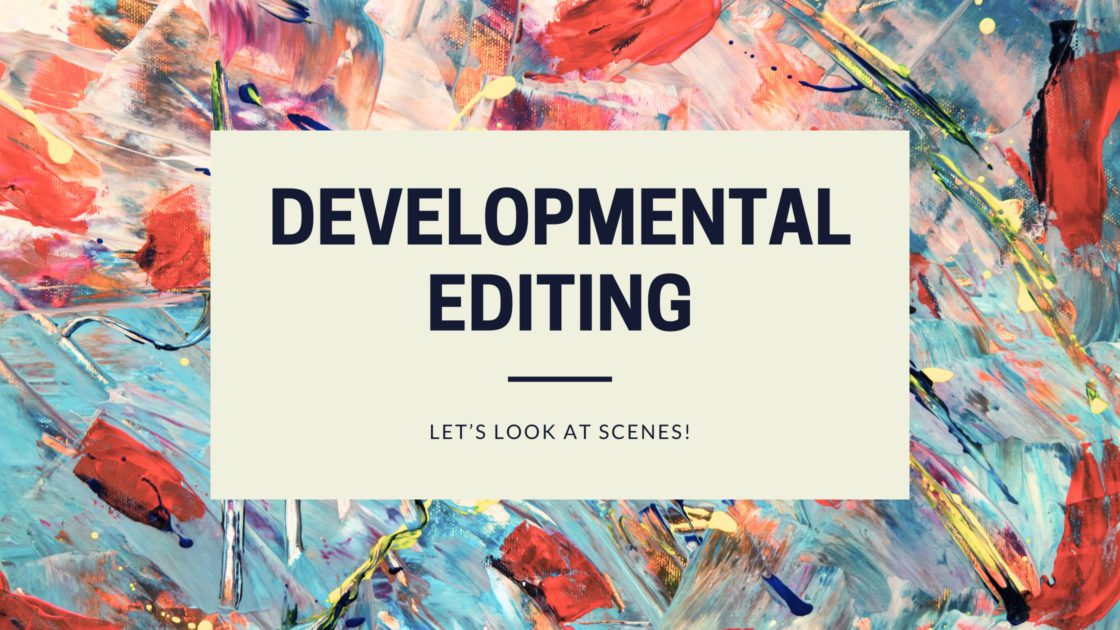Ready to learn about how to edit and write a powerful scene?
So far in our developmental editing posts, we’ve gone over the bones of a story (theme), and the ligaments that give the story movement (character development). Now, we’re on to muscles: scenes!
I love scene editing because it’s one of the easiest ways to ensure your book is doing all the heavy lifting it needs. Scenes are also small chunks you can work with without feeling too overwhelmed. But first:
What is a scene?

Oxford Dictionary gives two answers:
- the place where an incident in real life or fiction occurs or occurred.
- a sequence of continuous action in a play, movie, opera, or book.
Or, in other words, a scene is a set measure of time in which something happens. This may seem obvious to you, but it’s not always executed properly. To help us make sure we’re writing the best scenes possible, let’s add some more helpful parameters for story writing.
What makes a good scene?

- a sequence of continuous action or dialogue where an irreversible incident, reveal, or decision is made.
Why the changes?
First, dialogue can be just as important as action in a story. I include inner dialogue in this category as well.
Second, I wanted to clarify that based on your genre, it isn’t always going to be a dramatic incident or action scene that makes a scene valuable. What does make it valuable is the irreversibility of what happens.
Why does the inability to undo the events in a scene matter? Because if everyone can go back to things as they were before without a problem, your scene failed to do its job. Think about it. If everything can go back to normal after a scene in your story, what was the point of it? Why don’t the characters just do that? You have to force your characters to grow in a story, not give them an out.
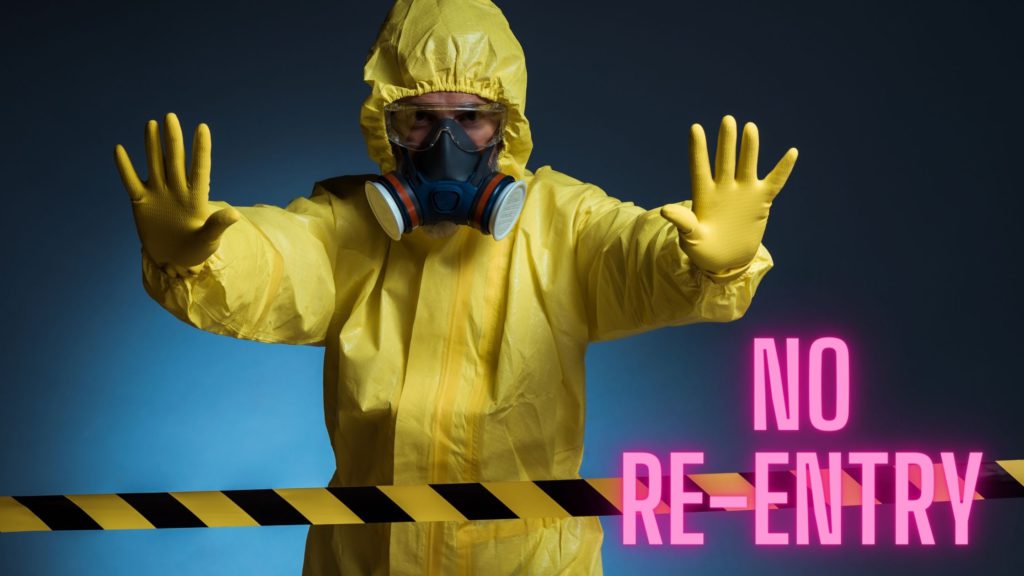
To clarify quickly, irreversibility and unchangeableness are different. Your characters can fix what happened, but they can’t go back to the way things were before it happened. That broken friendship can be saved but will never be the same again. The city can be saved but the buildings will all need to be rebuilt. The hero can get his dog back but he’ll never take it for a walk in Central Park again.
Whatever happens, it should matter and have a permanent effect on the plot or character relationships even after it is fixed. Relationships, especially, shouldn’t be overlooked! Readers love stories with complex character connections. This is doubly true for romance tropes!
So, first step! When editing a scene, you can ask yourself these questions:
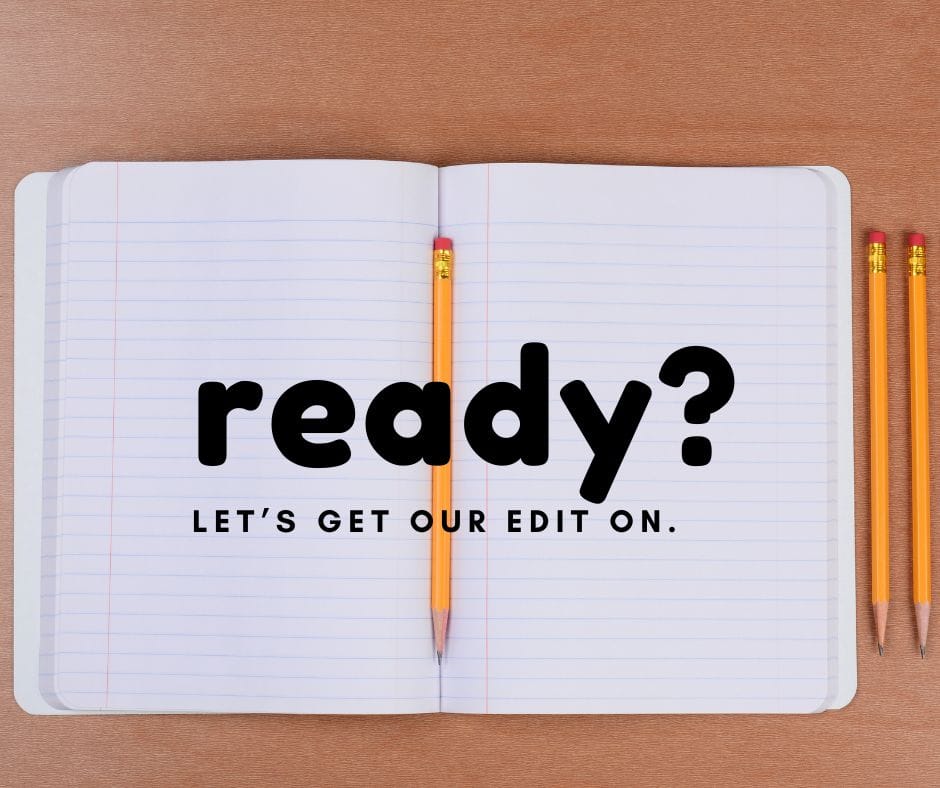
4 questions to ask when writing strong scenes:
- Did an irreversible incident, reveal, or decision happen?
- How did it affect the plot and character relationships?
- If it didn’t cause an irreversible change in the course of either of those, why did I feel the need to include it?
- Should I cut the scene entirely, or is there a way to give it importance and an irreversible contribution to the plot and characters?
Asking yourself these four questions will make sure your story pace doesn’t lag and that every word counts! I recommend during your developmental edit that you take the time to go through every scene in your book and ask these questions.
If you’d like to take an even deeper dive into your developmental scene edits, you can do these steps as well:
3 Editing Tips and Tricks

- Ask: Does the irreversible change in this scene help advance the plot, theme, or relationships in my story? Not every chapter needs to include all of these, but it should include at least one. You can choose a different color for each of these and make a mark at the top so you know if it’s been too long since you addressed one of these elements.
- Highlight like a maniac! If you’re not sure if your dialogue, thoughts, and action are balancing in your scenes individually and collectively, pull out those highlighters. Assign a color each to action, dialogue, inner dialogue, decisions made, and descriptions. Is it all action? Is it all dialogue? That can be okay in an individual scene, but should probably be addressed if several scenes in a row are all the same color! Notice all the unhighlighted parts as well. Those could be info dumps that need to be cleaned up if there are too many! (Especially in the beginning of your story or during an action scene!)
- Make a spreadsheet. Sigh. I know. This one bums me out, too, and I only do it if I’m having trouble seeing the big picture. Why torture yourself with a mathematical display of your beautiful story after you avoided doing anything calculative for your entire life? To keep things straight! I love my brain, don’t get me wrong. But… it’s also a hot mess. Er–haWt mess, where the ‘aw’ stands for ‘a writer’. Sometimes, making a spreadsheet where you list out which chapters address the plot, theme, and relationships with their corresponding colors can help you see the bigger picture more easily. Include whatever you need to to help get your book organized. You can go super intense like some authors I know and make a note of every time a location or character shows up or stick to big-picture items. Whatever works for you!
Example Time!
Looking for a quick read that makes every scene count? The Baron’s Ghost is a great example of a book that keeps up its pacing through reveals, character development, and irreversible changes! It even comes in audiobook for those busy beavers who still enjoy awesome stories!
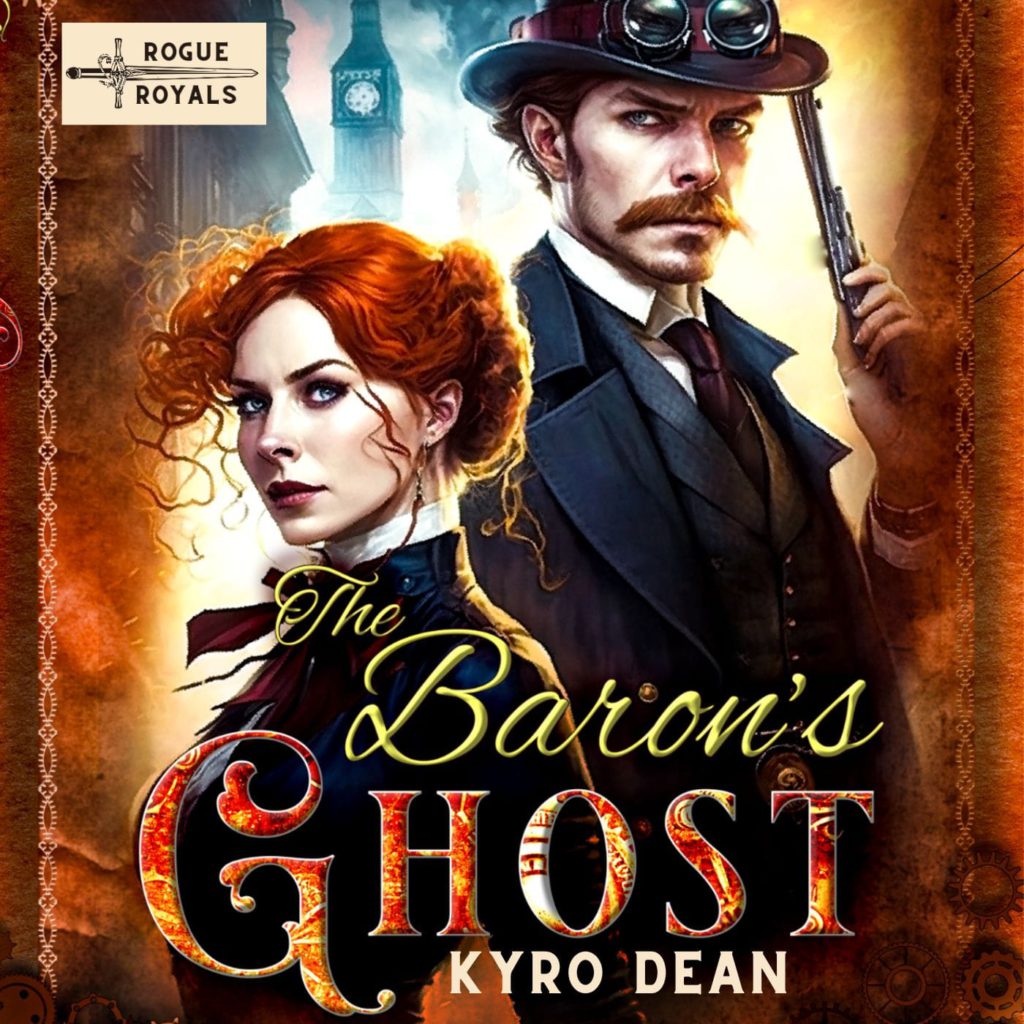
Developmental Editing a Scene Conclusion
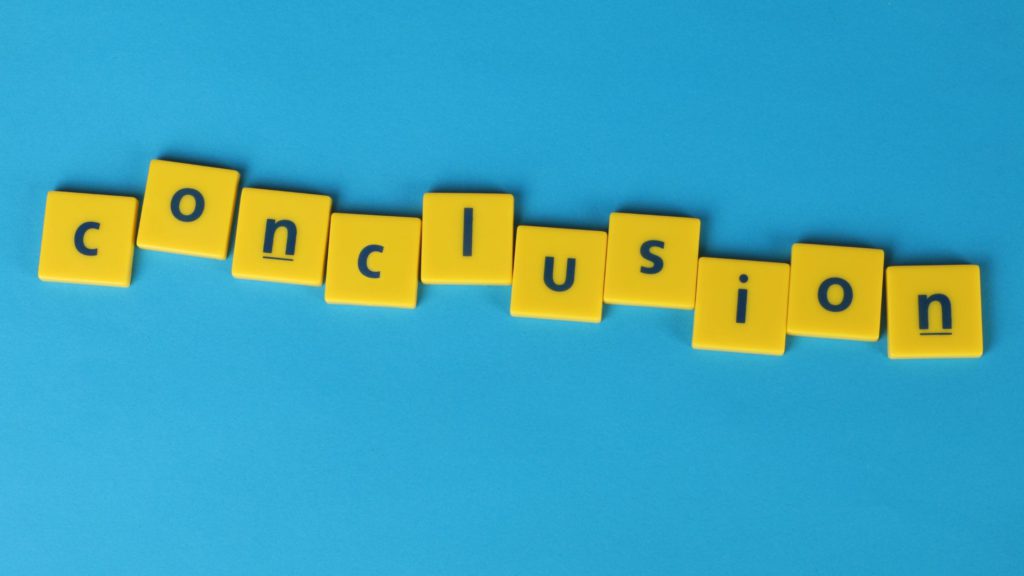
I hope this has given you some ideas on how to knead the kinks out of your muscle scenes and get them working for your story!
Keep in mind that there are many purposes to a scene. For instance, at the beginning of your novel, you may not have too much change as you show the reader what needs to change in your character’s life. Don’t worry, those chapters (if they’re doing their work properly) should fall under the theme. Just keep in mind where your story is at and listen to your gut.
You’re amazing!
Next week, we’ll take a deeper look at pacing and some ways you can edit your book to keep your reader turning every page! Until then, writers!

